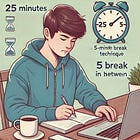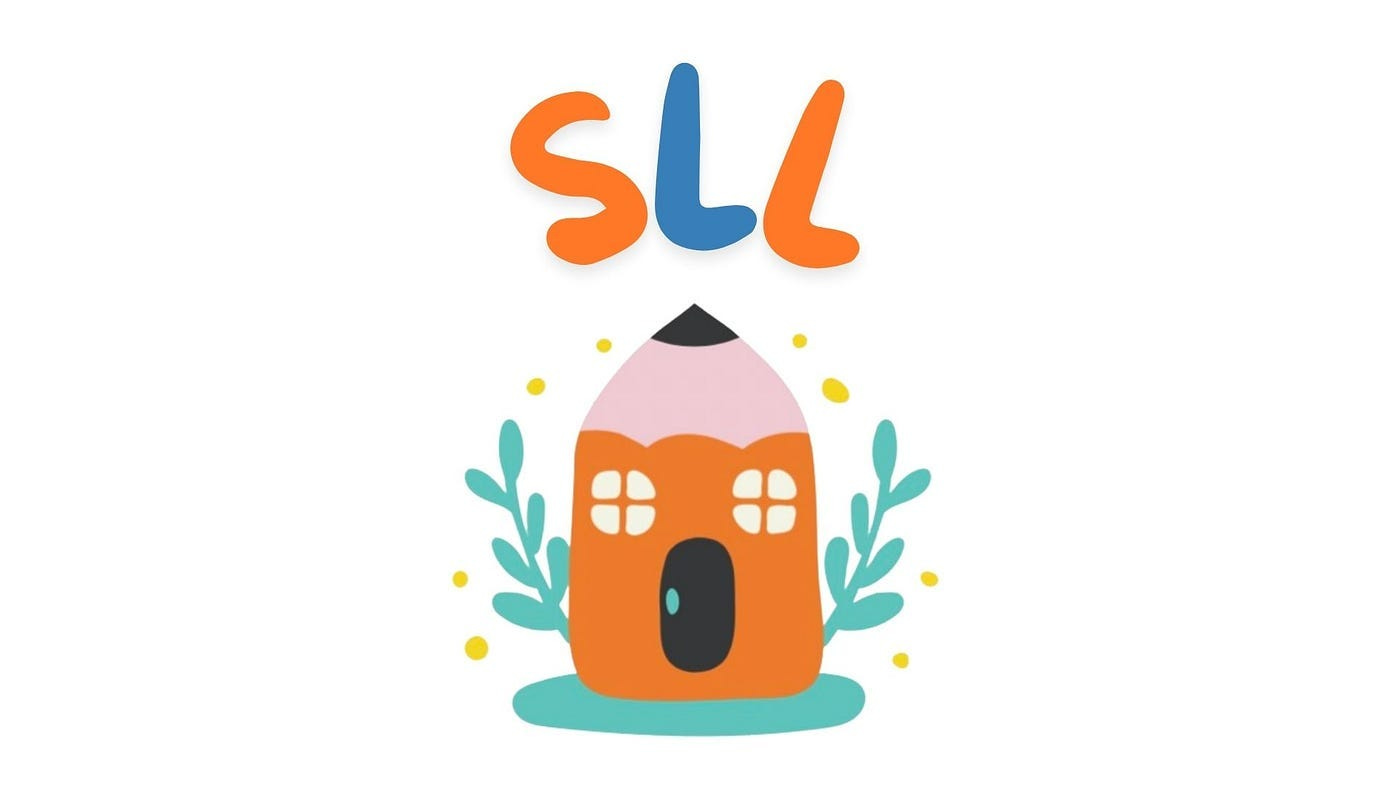5 Neuroscience Books That Changed My Life
And inspired me to learn more about the brain and the evolution of cognition

Wow! You loved my previous post, which recommended five books to learn anything. Thanks for your support!
So, because you love reading, I wanted to share an article I wrote on Medium recommending five beginner-friendly Neuroscience books to learn more about the human brain. These inspired me to become a neuroscientist (especially the top 1 recommendation). If you’re curious to learn more, I will discuss them in my other newsletter, “Behavioral Algorithms“ and “Cognitive Creatures,” when comparing different brains.
Who knows? Perhaps they inspire you to become a scientist, too.
Or you can use them for your ultra-learning project.
In any case, enjoy!
5. The Forgetting Machine by Rodrigo Quian Quiroga
This book is about memory and its myths.
If you don’t care much about neuroscience but effective learning, I think this would be a great reading.
Rodrigo Quiroga is a recognized Argentinian neuroscientist known to have discovered the “Jennifer Aniston” neurons, named concept cells. These neurons “fire” when a person sees an object representing a concept.
By showing images of famous people, like Jennifer Aniston or Luke Skywalker, they found that some neurons specifically fire when those images are presented to the person.
In this book, Rodrigo smoothly writes about the misconception regarding our capacity to retain rich details from our memories. The reality is that the brain doesn’t and can’t do this! Our brain remembers the context instead of the details because we don’t have enough neurons.
That’s why it is a forgetting machine.
Here’s a quote from the author about this:
“The astounding truth that, starting from very little information, the brain generates a reality and a past that make us who we are, despite the fact that this past, this collection of memories, is extremely slippery; despite the fact that the mere act of bringing a memory to our consciousness inevitably changes it; despite the fact that what underlies my awareness of a unique, immutable “self” that makes me who I am is constantly changing”
This book also covers deep questions, such as:
How do we store memories?
How much do we remember?
How does the brain represent concepts?
Can androids feel?
If you are interested and want to start with the Neuroscience of Memory, this is an excellent beginner option!
📚 Check this book here (affiliate link).
Table of Contents:
Chapter 1. How Do We Store Memories?
Chapter 2. How Much Do We See?
Chapter 3. Does the Eye Really See?
Chapter 4. How Much Do We Remember?
Chapter 5. Can We Remember More?
Chapter 6. Could We Become More Intelligent?
Chapter 7. Types of Memory
Chapter 8. How Does the Brain Represent Concepts?
Chapter 9. Can Androids Feel?
📚 Check this book here (affiliate link).
4. Your Brain is a Time Machine by Dean Buonomano
This one is a life-changer.
It will completely change your view about time and how complex and controversial its study is.
Dean Buonamono, another recognized neuroscientist and physicist, wrote a masterpiece about one of the most mysterious things in the universe: time and its perception.
Time is in the top 5 most common nouns used in the English language, remarking the importance of the concept in our lives. From that fact, Dean takes us on a journey from its philosophy (presentism vs eternalism) to circadian rhythms to the physical and mental nature of time.
In the book, the author argues that our brain is a time machine because:
It remembers the past to predict the future.
It tells you the time.
It is a machine that creates the sense of time.
It allows us to mentally travel back and forth in time.
The most interesting part for me was the intersection of physics and neuroscience. Perhaps time is just an illusion our brain generates, thus being completely subjective. If this is true, the way we studied time during the centuries was incorrect, and this was something that even Einstein was worried about!
Here’s a quote about this:
“A further conflict between physics and neuroscience is that if the flow of time is an illusion created by the mind, then instantaneous slices of the block universe must be able to sustain the phenomenon of consciousness. Yet we are not conscious of instantaneous moments, but rather of chunks of time that capture meaningful and interpretable events — the “specious present”. Even more vexing is the question of whether the phenomenon of consciousness itself requires some temporal thickness. Perhaps consciousness is more akin to evolution, an inherently temporal process that cannot be really said to exist within a static frame.”
Super recommended.
📚 Check this book here (affiliate link)
Table of Contents:
Part I Brain Time
1:00 Flavors of Time
2:00 The Best Time Machine You’ll Ever Own
3:00 Day and Night
4:00 The Sixth Sense
5:00 Patterns in Time
6:00 Time, Neural Dynamics, and Chaos
Part II The Physical and Mental Nature of Time
7:00 Keeping Time
8:00 Time: What the Hell Is It?
9.00 The Spatialization of Time in Physics
10:00 The Spatialization of Time in Neuroscience
11:00 Mental Time Travel
12:00 Consciousness: Binding the Past and the Future
📚 Check this book here (affiliate link)
3. Anxious by Joseph LeDoux
I remember reading this book when I was an undergraduate student in Psychology in my first year.
Anxious changed how I perceived anxiety and fear and made me realize that it is probably present in many other non-human animals.
Joseph LeDoux is a rock star (quite literally because he also has a band called the Amigdoloids) when talking about emotions and fear. In this book, he carries us to the basic neuroscience behind fear and anxiety, the importance of animals in studying these, and also how this research can be implemented in psychological treatments.
In other words, you will learn the neurobiology and philosophy of fear, anxiety, and emotions and the possible implementations in psychological treatments.
Although this book is from 2012, I think that everyone should read it once!
📚 Check this book here (affiliate link)
Table of Contents:
Chapter 1 The Tangled Web of Anxiety and Fear
Chapter 2 Rethinking the Emotional Brain
Chapter 3 Life is Dangerous
Chapter 4 The Defensive Brain
Chapter 5 Have We Inherited Emotional States of Mind from Our Animal Ancestors?
Chapter 6 Let’s Get Physical: The Consciousness Problem
Chapter 7 It’s Personal: How Memory Affects Consciousness
Chapter 8 Feeling It: Emotional Consciousness
Chapter 9 Forty Million Anxious Brains
Chapter 10 Changing the Anxious Brain
Chapter 11 Therapy: Lessons from the Laboratory
📚 Check this book here (affiliate link)
2. Behave: The Biology of Humans at Our Best and Worst by Robert Sapolsky
Without a doubt, this book is one of the best I’ve read in my life.
Sapolsky, a neurobiologist from Stanford University, dedicated decades to studying behavior in humans and non-human animals, particularly primates.
In “Behave,” he takes us on a journey from the very basics of the brain (anatomy, functionality, etc.) to how our actions end up having wars, peace, and other remarkable human behaviors.
This book is so well structured that it is almost a textbook. He started dividing behavior and brain into time lapses: from seconds, hours, days, months, and years. Then, Robert explains all the physiology and behaviors related to those time lapses.
The book is quite long: more than 600 pages of pure science! And three appendixes for Neuroscience 101, The Basics of Endocrinology, and Protein Basics.
Here’s how the book starts in Chapter One:
“A behavior has occurred — one that is reprehensible, or wonderful, or floating ambiguously in between. What occurred in the prior second that triggered the behavior? This is the province of the nervous system. What occurred in the prior seconds to minutes that triggered the nervous system to produce that behavior? This is the world of sensory stimuli, much of it sensed unconsciously. What occurred in the prior hours to days to change the sensitivity of the nervous system to such stimuli? Acute actions of hormones. And so on, all the way back to the evolutionary pressures played out over the prior millions of years that started the ball rolling.”
I read this in a bookstore and bought it almost immediately.
One of the best decisions of my life.
📚 Check this book here (affiliate link)
Table of Contents:
The behavior
One second before
Seconds to minutes before
Hours to days before
Days to months before
Adolescence: or, Dude, where’s my frontal cortex?
Back to the crib, back to the womb
Back to when you were just a fertilized egg
Centuries to millennia before
The evolution of behavior
Us versus them
Hierarchy, obedience, and resistance
Morality and doing the right thing, once you’ve figured out what that is
Feeling someone’s pain, understanding someone’s pain, alleviating someone’s pain
Metaphors we kill by
Biology, the criminal justice system, and (oh, why not?) free will
War and peace.
📚 Check this book here (affiliate link)
1. Being You: a New Science of Consciousness by Anil Seth
Since I was a kid, I’ve been very interested in how we experience the world.
I often extend these thoughts to other animals: “Do they perceive the world like us?” or “Are they conscious like us? I don’t think so.”
Consciousness is a huge and controversial topic in neuroscience. There are many books about it. But “Being You” by Anil Seth is definitely my favorite one.
“Being you” takes you from the philosophical debate of consciousness to the core of our experience. In particular, Seth uses examples from optical illusions, showing us that the brain generates consciousness. This means we don’t perceive the world passively, but we actively generate it. For example, the classic dress image (is it black and blue or white and gold?) gets multiple experiences, and the truth behind this is that they are all true.
Seth then uses the analogy of the “Bayesian Brain,” beautifully arguing that the brain is like a Bayesian machine, making the best inferences from the information it has at that moment.
My favorite part of the book is when he argues about other types of consciousness. He talks about it not in singular but in plural: there may be consciousnesses out there in several non-human animals.
Finally, he points out a misconception of consciousness in several academics and people: consciousness and intelligence ARE NOT the same thing.
Here’s one of my favorite quotes from the book:
“Looking out across the wild diversity of life on Earth, we may value more — and take for granted less — the richness of subjective experience in all its variations and distinctiveness, in ourselves and in other animals too. And we may also find renewed motivation to minimize suffering wherever, and however, it might appear.”
Being you shaped my academic dream.
So it will always be my top 1.
📚 Check this book here (affiliate link)
Table of Contents:
I: Level
The Real Problem
Measuring Consciousness
Phi
II: Content
Perceiving from the Inside Out
The Wizard of Odds
The Beholder’s Share
III: Self
Delirium
Expect Yourself
Being a Beast Machine
A Fish in Water
Degrees of Freedom
IV: Other
Beyond Human
Machine Minds
📚 Check this book here (affiliate link)
Ultra-learning saved my career.
It helped me learn anything without overstudying or overworking. But remember, each person has a different life. Perhaps you work full-time and also study. Or maybe you have a family, etc.
Be reasonable, and don’t fall into toxic productivity.
Here are some last recommendations:
Don’t compare yourself with others. Take your time.
This is not a competition. This is about you. Make it fun and healthy.
Please take care of yourself. That’s the most important thing!
Now it is your turn.
What are you going to learn next?
Until the next time,
Axel







